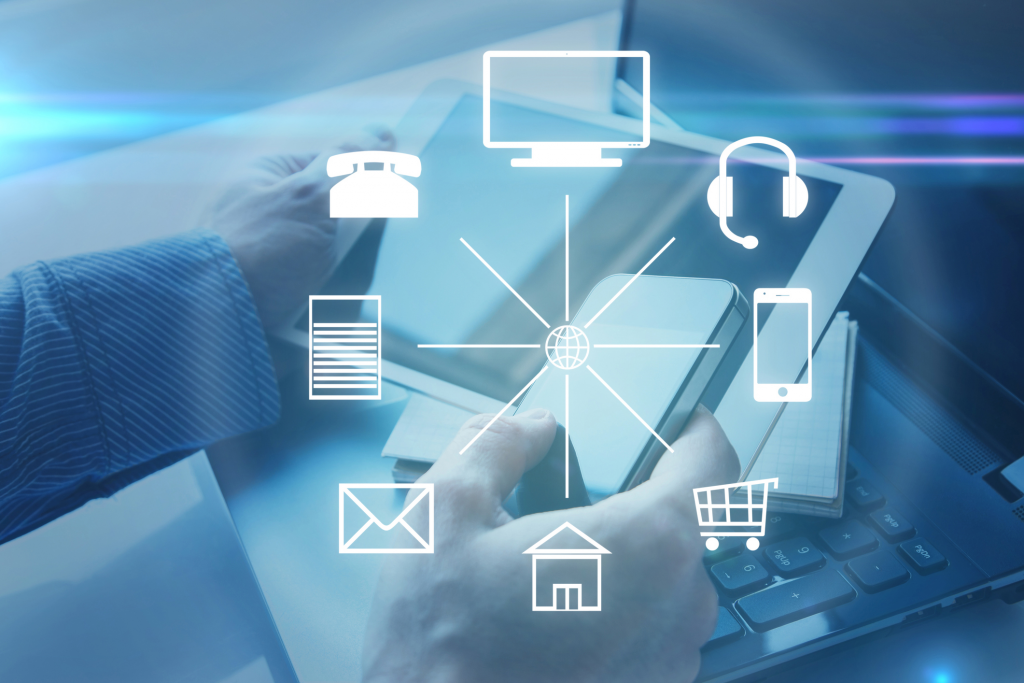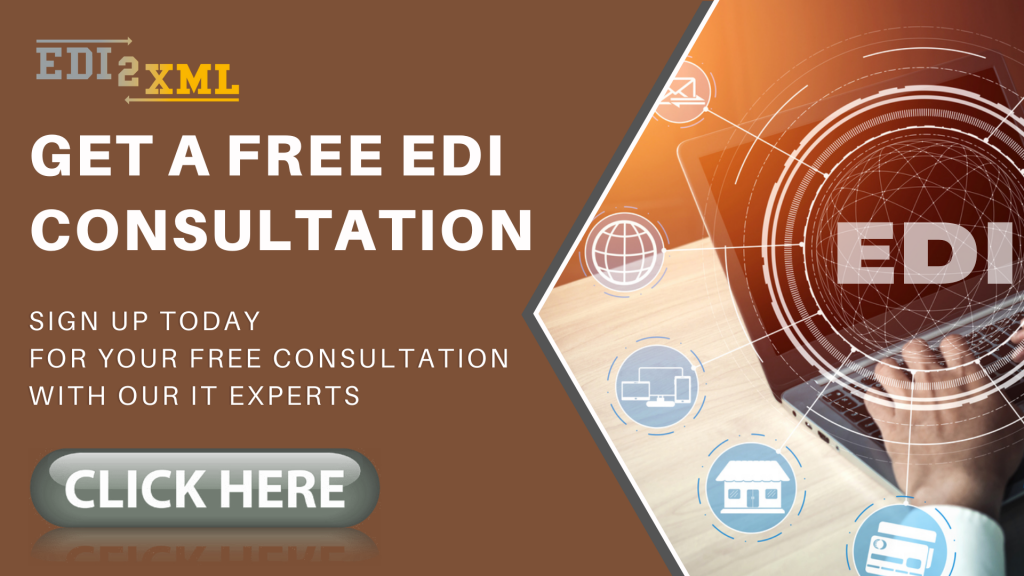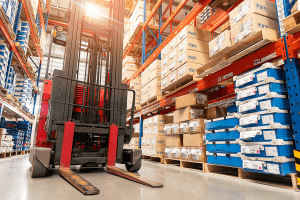Electronic Data Interchange (EDI) Integration for Transportation and Logistics
Electronic data interchange (EDI) is the exchange of commercial and financial electronic documents between business partners. There are several EDI standards used in transportation and logistics:
– EDI X12 standard used in the United States and Canada.
– EDIFACT – mainly used in Europe and international transportation.
Useful Reading: What Are the Differences Between ANSI X12 and UN/EDIFACT
The exchange of EDI documents between business partners simplifies and speeds up business processes. That is why, in logistics, regardless of the mode of transportation, motor, marine, or rail transportation EDI is used as a fast, economical, and safe method of transferring important business information related to the transportation of goods.
How is EDI used in transportation?
Electronic Data Interchange (EDI) is widely used in transportation and logistics to automate communication and data exchange between different parties involved in the transportation process, such as shippers, carriers, and third-party logistics providers (3PLs).
In transportation, EDI is used for various tasks such as:
Shipment tracking and status updates: EDI messages can be used to provide real-time information about the status of shipments, such as pickup and delivery times, estimated time of arrival (ETA), and any delays or issues.
Shipping documentation: EDI can be used to exchange shipping documents such as bills of lading, packing lists, and customs declarations, which helps to reduce errors and streamline the shipping process.
Freight invoicing and payment: EDI messages can be used to exchange billing and payment information between shippers, carriers, and 3PLs, reducing the need for manual data entry and minimizing the risk of errors and disputes.
Capacity planning and optimization: EDI can be used to exchange information about available capacity, shipment volumes, and transportation rates, enabling carriers and shippers to plan their operations more efficiently and make more informed decisions.
What are the most important EDI documents used in transportation?
In addition to common EDI transactions such as orders or invoices, each industry uses its specific EDI documents. Electronic Data Interchange in logistics ensures the operational interaction between business partners (buyers, suppliers, 3PL warehouses, forwarders, etc.) at all stages of the delivery, and improves the management of complex business processes. Thus, in transportation, the following types of EDI documents are most commonly used:
EDI 204 – Motor Carrier Load Tender: This EDI document is typically sent from the shipper (retailer, manufacturer, or a distribution center) to the transportation provider to request pickup of the shipment.
EDI 990 – Response to the Load Tender: used by the transportation provider to inform acceptance or rejection of the shipment order.
EDI 214 Transportation Carrier Shipment Status Message: delivery status message sent by the transportation company to the shipper (retailer, manufacturer, or a distribution center) to give an update on the status of delivery.
EDI 210 Motor Carrier Freight Details and Invoice: Submits by transportation provider to the shipper after delivery. This EDI transaction contains full information about the cost of services provided by the transportation provider and is used as an invoice for a payment request.
EDI 212 Motor Carrier Delivery Trailer Manifest – send by a transportation company to consignees to inform about the contents of a trailer containing multiple loads.
EDI 856 Advanced Ship Notice (ASN): sent by transportation provider or warehouse / supplier to the consignee immediately upon closing the truck, to inform about all pertinent data relative to the shipment.
EDI 997 – Functional Acknowledgement: used by both parties t to confirm they received the transaction set.
Complete list of EDI transportation codes
Below is a complete list of EDI X12 transactions sets used in the transportation industry. The EDI transactions listed below are maintained by the X12I subcommittee under the X12 Accredited Standards Committee.
- EDI 104 Air Shipment Information
- EDI 106 Motor Carrier Rate Proposal
- EDI 107 Request for Motor Carrier Rate Proposal
- EDI 108 Response to a Motor Carrier Rate Proposal
- EDI 109 Vessel Content Details
- EDI 110 Air Freight Details and Invoice
- EDI 120 Vehicle Shipping Order
- EDI 121 Vehicle Service
- EDI 125 Multilevel Railcar Load Details
- EDI 126 Vehicle Application Advice
- EDI 127 Vehicle Baying Order
- EDI 128 Dealer Information
- EDI 129 Vehicle Carrier Rate Update
- EDI 160 Transportation Automatic Equipment Identification
- EDI 161 Train Sheet
- EDI 163 Transportation Appointment Schedule Information
- EDI 204 Motor Carrier Load Tender
- EDI 210 Motor Carrier Freight Details and Invoice
- EDI 211 Motor Carrier Bill of Lading
- EDI 212 Motor Carrier Delivery Trailer Manifest
- EDI 213 Motor Carrier Shipment Status Inquiry
- EDI 214 Transportation Carrier Shipment Status Message
- EDI 215 Motor Carrier Pickup Manifest
- EDI 216 Motor Carrier Shipment Pickup Notification
- EDI 217 Motor Carrier Loading and Route Guide
- EDI 219 Logistics Service Request
- EDI 220 Logistics Service Response
- EDI 222 Cartage Work Assignment
- EDI 223 Consolidators Freight Bill and Invoice
- EDI 224 Motor Carrier Summary Freight Bill Manifest
- EDI 225 Response to a Cartage Work Assignment
- EDI 227 Trailer Usage Report
- EDI 228 Equipment Inspection Report
- EDI 240 Motor Carrier Package Status
- EDI 250 Purchase Order Shipment Management Document
- EDI 284 Commercial Vehicle Safety Reports
- EDI 285 Commercial Vehicle Safety and Credentials Information Exchange
- EDI 286 Commercial Vehicle Credentials
- EDI 300 Reservation (Booking Request) (Ocean)
- EDI 301 Confirmation (Ocean)
- EDI 303 Booking Cancellation (Ocean)
- EDI 304 Shipping Instructions
- EDI 309 Customs Manifest
- EDI 310 Freight Receipt and Invoice (Ocean)
- EDI 311 Canada Customs Information
- EDI 312 Arrival Notice (Ocean)
- EDI 313 Shipment Status Inquiry (Ocean)
- EDI 315 Status Details (Ocean)
- EDI 317 Delivery/Pickup Order
- EDI 319 Terminal Information
- EDI 322 Terminal Operations and Intermodal Ramp Activity
- EDI 323 Vessel Schedule and Itinerary (Ocean)
- EDI 324 Vessel Stow Plan (Ocean)
- EDI 325 Consolidation of Goods In Container
- EDI 326 Consignment Summary List
- EDI 350 Customs Status Information
- EDI 352 Customs Carrier General Order Status
- EDI 353 Customs Events Advisory Details
- EDI 354 Customs Automated Manifest Archive Status
- EDI 355 Customs Acceptance/Rejection
- EDI 356 Customs Permit to Transfer Request
- EDI 357 Customs In-Bond Information
- EDI 358 Customs Consist Information
- EDI 359 Customs Customer Profile Management
- EDI 361 Carrier Interchange Agreement (Ocean)
- EDI 404 Rail Carrier Shipment Information
- EDI 410 Rail Carrier Freight Details and Invoice
- EDI 412 Trailer or Container Repair Billing
- EDI 414 Rail Carhire Settlements
- EDI 417 Rail Carrier Waybill Interchange
- EDI 418 Rail Advance Interchange Consist
- EDI 419 Advance Car Disposition
- EDI 420 Car Handling Information
- EDI 421 Estimated Time of Arrival and Car Scheduling
- EDI 422 Equipment Order
- EDI 423 Rail Industrial Switch List
- EDI 424 Rail Carrier Services Settlement
- EDI 425 Rail Waybill Request
- EDI 426 Rail Revenue Waybill
- EDI 429 Railroad Retirement Activity
- EDI 431 Railroad Station Master File
- EDI 432 Rail Car Hire Rate Negotiation
- EDI 433 Railroad Reciprocal Switch File
- EDI 434 Railroad Mark Register Update Activity
- EDI 435 Standard Transportation Commodity Code Master
- EDI 436 Locomotive Information
- EDI 437 Railroad Junctions and Interchanges Activity
- EDI 440 Shipment Weights
- EDI 451 Railroad Event Report
- EDI 452 Railroad Problem Log Inquiry or Advice
- EDI 453 Railroad Service Commitment Advice
- EDI 455 Railroad Parameter Trace Registration
- EDI 456 Railroad Equipment Inquiry or Advice
- EDI 460 Railroad Price Distribution Request or Response
- EDI 463 Rail Rate Reply
- EDI 466 Rate Request
- EDI 468 Rate Docket Journal Log
- EDI 470 Railroad Clearance
- EDI 475 Rail Route File Maintenance
- EDI 485 Ratemaking Action
- EDI 486 Rate Docket Expiration
- EDI 490 Rate Group Definition
- EDI 492 Miscellaneous Rates
- EDI 494 Rail Scale Rates
- EDI 601 Customs Export Shipment Information
- EDI 603 Transportation Equipment Registration
- EDI 715 Intermodal Group Loading Plan
- EDI 854 Shipment Delivery Discrepancy Information
- EDI 858 Shipment Information
- EDI 859 Freight Invoice
- EDI 920 Loss or Damage Claim – General Commodities
- EDI 924 Loss or Damage Claim – Motor Vehicle
- EDI 925 Claim Tracer
- EDI 926 Claim Status Report and Tracer Reply
- EDI 928 Automotive Inspection Detail
- EDI 980 Functional Group Totals
- EDI 990 Response to a Load Tender
- EDI 998 Set Cancellation
The Benefit of Using EDI in Transportation
The exchange of information between business partners (orders, invoices, etc.) on paper or by e-mail requires manual input of information into the ERP, CRM, accounting, or other corporate back-office application of the company. The use of EDI allows companies to avoid manual input – all transactions are performed automatically, without delays or inaccuracies.
The use of EDI in transportation allows:
- to optimize the entire supply chain, namely the processes of management, planning, and control of transportation;
- to increase the speed and efficiency of data processing and improve accuracy;
- the manufacturer to promptly respond to the buyer’s requests;
- transport companies to make delivery on time;
- wholesale suppliers to improve the efficiency of logistics and procurement and optimally manage their inventory;
- to reduce transportation costs;
- improve accuracy and avoid manual input of information.
Thus, the use of EDI increases the speed and accuracy of data and allows companies to concentrate on important business tasks, and not on routine issues of processing and sending documents.
EDI integration in Logistics: Fully Managed EDI Service vs EDI Web Service (API)
Companies implementing EDI can be divided into two groups:
– EDI Initiator company
– Companies involved in the EDI process
Fully Managed EDI Service for EDI Initiator Company
Initiator – a company that realized the great potential of using EDI and decided to implement EDI in operations with its business partners. These are usually large market players who have been using EDI for many years.
Usually, these companies have many business partners and a huge monthly document turnover. That is why they often choose a Fully Managed EDI Service.
However the situation has changed in recent years, more and more mid-sized companies operating in the transportation industry are realizing the benefits of using EDI and are actively integrating Electronic Data Interchange to exchange critical important documents with their business partners.
This is why, we, at EDI2XML offer a Fully Managed EDI service that can fit any size company.
Our EDI2XML integration platform, deployed in our private cloud, runs 24/7/365 and handles all EDI file conversion and transformation between business partners, so customers do not need to install software or hardware onsite.

We, as an integration and EDI provider, are responsible for all stages of the integration: from project planning to the development of the file format requested by the client (Json, XML, TXT, CSV), as well as testing and certification with your business partner.
Our “fully managed” EDI service solution has a dynamic monthly price that increases or decreases depending on the volume of data transferred.
This allows us to meet the needs of even small companies with a small volume of transferred documents.
EDI Web Service for Companies involved in the EDI process
Involved companies– organizations that are forced to implement EDI at the request of the initiating company to start a partnership and conclude a contract or when a business partner specifies the use of EDI as a pre-requisite or condition for further business collaboration.
In involved companies, the decision to implement EDI is made at the initiative of a third-party company. However, this requirement does not necessarily imply a large investment for EDI integration.
For companies that find themselves in a situation where a business partner requires a quick connection to EDI, we offer our unique solution EDI Web Service.
EDI2XML web service is our REST API to convert and transform X12 to XML and vice versa. The API web service is very low-cost relative to the Fully managed EDI Service and designed for companies who got their own technical resources to work with REST API (call and consume HTTP Rest Web services). Definitive benefits of EDI Web Service is a low cost per KC, no contract, no commitment, and especially quick entry: you can be up and running in less than an hour, and it is proven; we provide everything to your developers to get started, a java client with its source code and instructions on how to work with.
Choose the best EDI provider for the logistics and transportation industry
In modern logistics, the requirements for carriers are very high and the use of EDI helps them keep the bar high.
We, as a successful EDI provider, have been helping our customers for 21 years quickly, reliably connect to EDI and integrate it into business systems.
Contact us for a free consultation and we will help you choose the most suitable EDI solution for your business.























